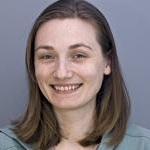Welcome to the forums at seaphages.org. Please feel free to ask any questions related to the SEA-PHAGES program. Any logged-in user may post new topics and reply to existing topics. If you'd like to see a new forum created, please contact us using our form or email us at info@seaphages.org.
Recent Activity
Debbie Jacobs-Sera posted in Validating Translational Frameshifts in DNA Master
storksle posted in Validating Translational Frameshifts in DNA Master
Debbie Jacobs-Sera posted in Validating Translational Frameshifts in DNA Master
Lee Hughes posted in Validating Translational Frameshifts in DNA Master
storksle posted in Validating Translational Frameshifts in DNA Master
One of our draft phage genomes has a 'stop' in the middle of the immunity repressor gene.
| Link to this post | posted 18 Feb, 2016 19:59 | |
|---|---|
|
|
One of our teams noticed this as they were annotating and brought it to my attention this morning. The stop codon is about midway in the gene compared to all the other finished A6 phage genomes. He noticed the obvious mis-alignment of the two "features" the stop produced. The second feature was called from the next in-frame start codon after the stop. When he started blasting the homology of both to different regions of the same gene popped out at him. On to the science question: I am I correct in understanding that if the gene for the "immunity repressor protein" is inactivated lysogenized cells should be super-infectable by another A6 phage when normally they would likely not be were a functional protein produced? Is there an easy experimental method available to test for the inactivation of the immunity repressor protein? Is this even remotely interesting? I phamerated all the finished A6 genomes and did not find any others with this interrupting stop codon. Do we know of any other cases with this protein is disruppted? Can you think of any other interesting experiments that might be useful to conduct with this phage or lysogenized cells? Thanks for helping me brainstorm how discovery of this point mutation might be utilized further. Thanks. Greg |
| Link to this post | posted 24 Feb, 2016 15:45 | |
|---|---|
|
|
So question 1: is it the DNA primase? All the primases are split into two overlapping reading frames in the Cluster As. We are trying to figure out how this works biologically (frameshift? splice?) but don't know yet. If it is not the primase, please send us the sequence coordinates so we can make sure it isn't a sequencing error. Question 2: if the immunity repressor gets inactivated through mutation, you will no longer have a temperate phage (or be able to form a lysogen in the first place). If the phage integrates and THEN somehow the repressor got inactivated, the prophage would still come out. so either way, there would not be a lysogen around to test. To answer the other part of your question, if you had an A6 prophage, and infected that lysogen with an A1 phage (that has a different recognition sequence for the immunity repressor), yes, you would make plaques on the lysogen. |


